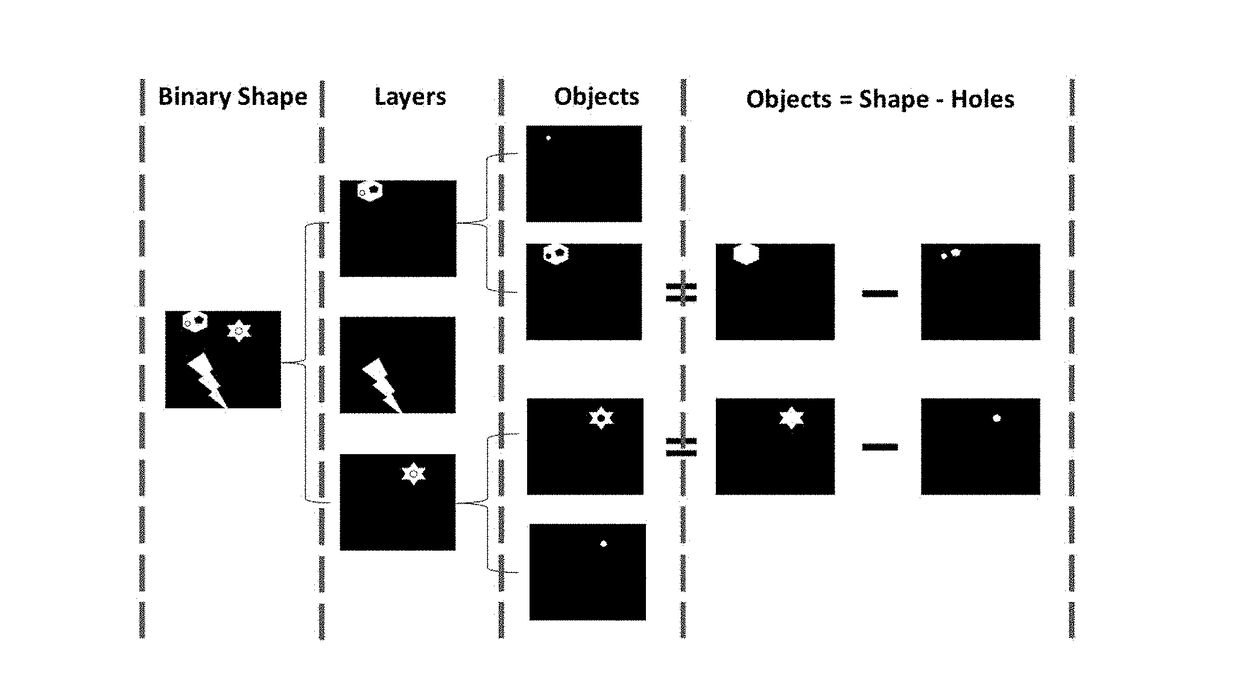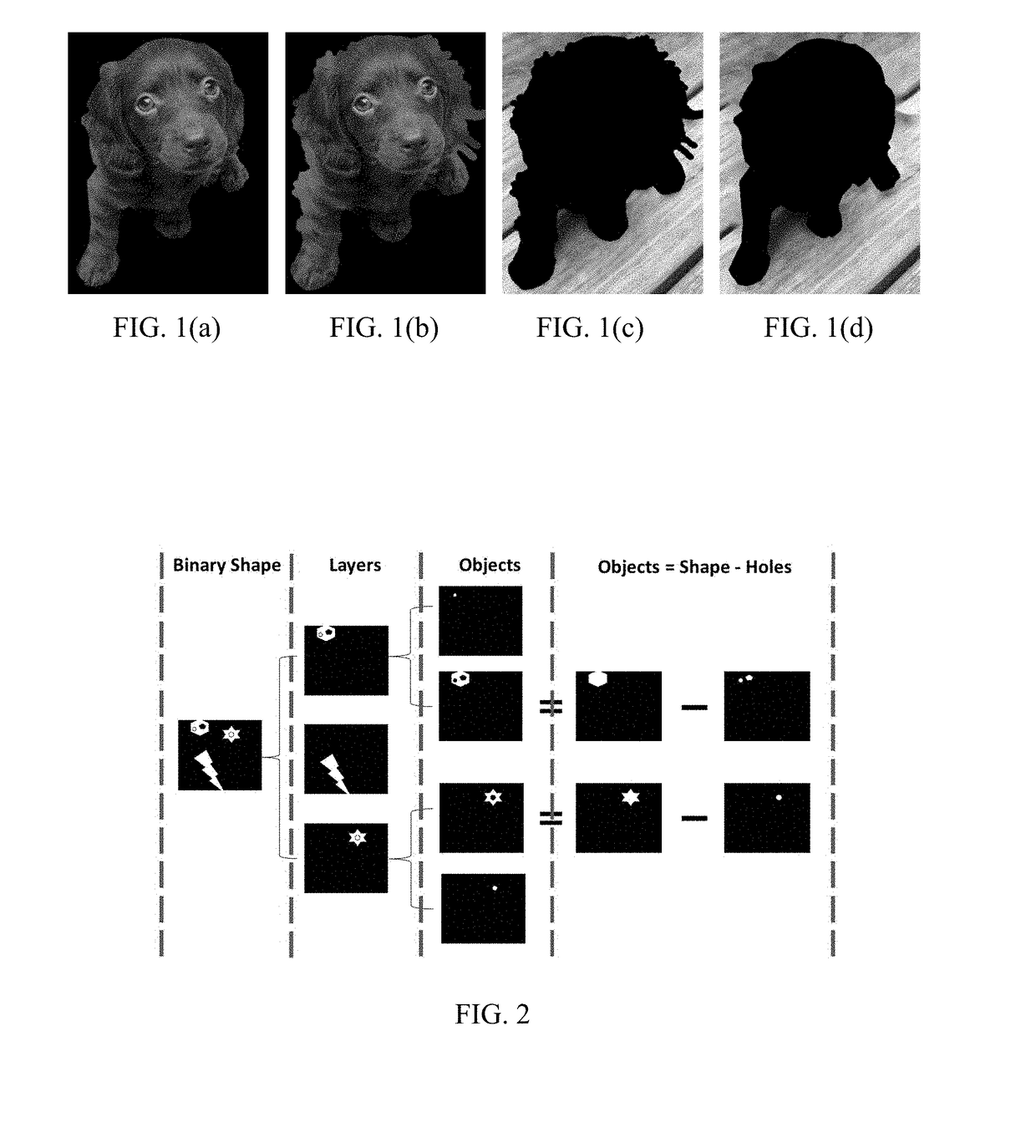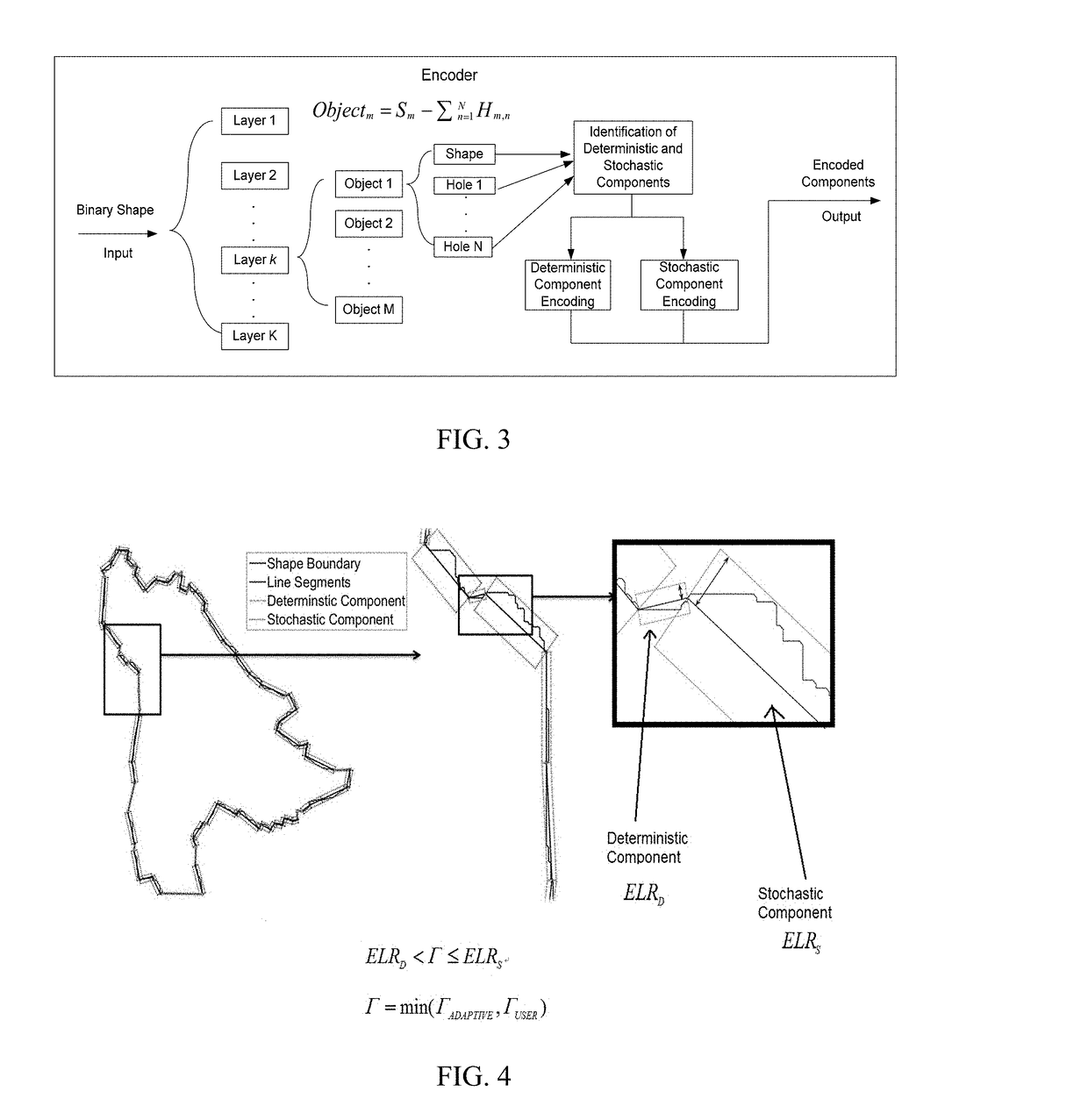Shape-adaptive model-based codec for lossy and lossless compression of images
a model-based, image-adaptive technology, applied in the field of shape information compression, can solve the problems of reducing the compression ratio, so as to achieve the effect of improving the compression ratio
- Summary
- Abstract
- Description
- Claims
- Application Information
AI Technical Summary
Benefits of technology
Problems solved by technology
Method used
Image
Examples
Embodiment Construction
[0025]An image is a representation of visual perceptions, which may be two-dimensional (2D), such as a photograph or screen display. It may also be three-dimensional (3D), such as stereo images. In general, 3D images can also be represented as multiple 2D images, or a 2D image with a deformation / depth map. Hence, the shape processing of the present invention can be considered for 2D images for simplicity. However, in general, these processing techniques can also be extended to the processing of 3D or stereo images.
[0026]To understand the techniques of the present invention it is helpful to understand inpainting. FIG. 1 is an illustration of that demonstrates this concept. Inpainting (also known as image interpolation or video interpolation) refers to the application of sophisticated algorithms to replace lost or corrupted parts of the image data (mainly small regions or small defects). FIGS. 1 (a) and (c) shows the original foreground and background, respectively. Notice that there ...
PUM
 Login to View More
Login to View More Abstract
Description
Claims
Application Information
 Login to View More
Login to View More - R&D
- Intellectual Property
- Life Sciences
- Materials
- Tech Scout
- Unparalleled Data Quality
- Higher Quality Content
- 60% Fewer Hallucinations
Browse by: Latest US Patents, China's latest patents, Technical Efficacy Thesaurus, Application Domain, Technology Topic, Popular Technical Reports.
© 2025 PatSnap. All rights reserved.Legal|Privacy policy|Modern Slavery Act Transparency Statement|Sitemap|About US| Contact US: help@patsnap.com



